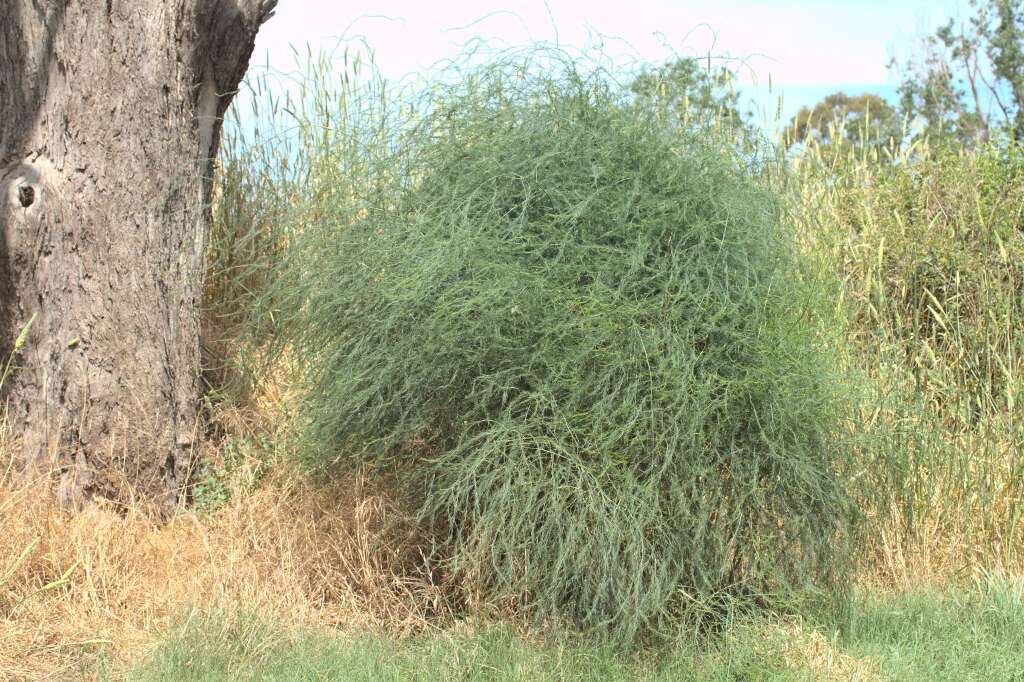Asparagus officinalis
L. AsparagusDioecious herbs to 1.5 m high, with a short, branching rhizome. Cladodes linear-filiform, 3 per bract axil, 5–30 mm long, 0.5–1 mm wide. Flowers 4–8 mm wide, white to pale green; males with anthers shorter than the perianth and a rudimentary ovary; female flowers with rudimentary stamens and ovary 2–3 mm long. Berry globular, to 10 mm diam., red. Seeds 1-few, 3–4 mm long. Flowers Dec.–Feb.
LoM, MuM, Wim, GleP, VVP, VRiv, MSB, RobP, MuF, GipP, OtP, WaP, Gold, CVU, DunT, NIS, EGL, EGU, HSF, HNF. Also naturalised in WA, SA, Qld, NSW. Native to Europe and western Asia. The edible Asparagus of cultivation. Generally occurring near watercourses or lakes (sometimes somewhat saline), mostly not far distant from land formerly or currently used for commercial or domestic asparagus production.
Conran, J.G. (1994). Liliaceae. In: Walsh, N.G.; Entwisle, T.J., Flora of Victoria Vol. 2, Ferns and Allied Plants, Conifers and Monocotyledons, pp. 637–686. Inkata Press, Melbourne.
 Spinning
Spinning




